Treatment for h pylori side effects. H. Pylori Treatment Side Effects: Understanding and Managing Complications
What are the common side effects of H. pylori treatment. How can patients manage these side effects effectively. What are the potential risks of untreated H. pylori infections. How does H. pylori impact overall digestive health.
Understanding H. Pylori and Its Treatment
Helicobacter pylori (H. pylori) is a bacteria that colonizes the stomach lining of approximately 50% of the global population. While many infected individuals remain asymptomatic, H. pylori can lead to various gastrointestinal issues, including gastritis, peptic ulcers, and in rare cases, stomach cancer. Treatment typically involves a combination of medications, including antibiotics and acid-reducing drugs, to eradicate the bacteria and promote healing.
H. pylori treatment regimens often include:
- Proton pump inhibitors (PPIs) to reduce stomach acid production
- Antibiotics such as clarithromycin, amoxicillin, or metronidazole
- Bismuth subsalicylate to protect the stomach lining
While these treatments are generally effective, they can sometimes lead to side effects that patients should be aware of and prepared to manage.

Common Side Effects of H. Pylori Treatment
Up to 50% of patients undergoing H. pylori treatment may experience side effects. Fortunately, most of these are mild and transient. Here are some of the most common side effects and ways to manage them:
Metallic Taste in the Mouth
This side effect is often associated with metronidazole (Flagyl®) or clarithromycin (Klacid®). To alleviate this discomfort:
- Stay hydrated by drinking plenty of water
- Chew sugar-free gum or mints
- Consume certain fruits or foods that can help mask the taste
Gastrointestinal Disturbances
Nausea, diarrhea, and abdominal discomfort are common during H. pylori treatment. To manage these symptoms:
- Eat smaller, more frequent meals
- Avoid spicy or fatty foods
- Stay hydrated to prevent dehydration from diarrhea
Skin Reactions and Other Systemic Effects
Some patients may experience skin redness, headaches, sweating, or rapid heartbeat, particularly when consuming alcohol while taking metronidazole. It’s crucial to avoid alcohol during treatment and for at least 24 hours after completing the course of metronidazole.
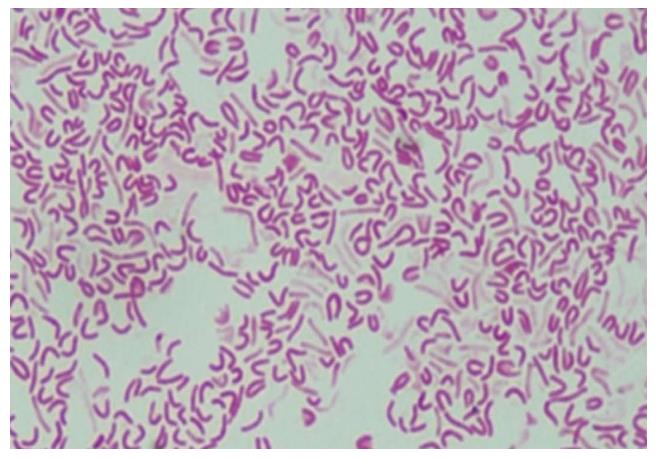
Managing Specific Treatment-Related Side Effects
Black Stools and Constipation
Bismuth-containing medications can cause black stools and constipation. While these symptoms typically resolve on their own, it’s important to differentiate them from melena (black, tarry stools due to gastrointestinal bleeding). If you experience black stools along with symptoms such as vomiting blood, abdominal pain, fatigue, or paleness, consult your healthcare provider immediately.
Antibiotic-Associated Diarrhea
Antibiotics can disrupt the natural balance of gut bacteria, sometimes leading to diarrhea. To manage this:
- Stay hydrated
- Consider probiotics (after consulting with your doctor)
- Avoid foods that may exacerbate diarrhea, such as dairy products or high-fiber foods
The Importance of Treatment Adherence
Despite potential side effects, it’s crucial to complete the full course of H. pylori treatment as prescribed. Stopping treatment prematurely can lead to treatment failure and antibiotic resistance. If side effects become intolerable, don’t hesitate to contact your healthcare provider for advice or potential adjustments to your treatment plan.

Risks of Untreated H. Pylori Infections
While many individuals with H. pylori remain asymptomatic, untreated infections can lead to serious complications in some cases. Understanding these risks underscores the importance of proper diagnosis and treatment:
Chronic Gastritis
H. pylori can cause long-term inflammation of the stomach lining, leading to chronic gastritis. This condition can cause persistent discomfort, indigestion, and potentially increase the risk of more severe complications.
Peptic Ulcers
H. pylori is a primary cause of peptic ulcers, which are open sores that develop on the lining of the stomach or duodenum. These ulcers can cause:
- Abdominal pain
- Bloating
- Nausea or vomiting
- Loss of appetite
- Unexplained weight loss
In severe cases, peptic ulcers can lead to internal bleeding or perforation of the stomach or intestinal wall.
Increased Risk of Gastric Cancer
Long-term H. pylori infection is associated with an increased risk of gastric cancer. While the overall risk remains relatively low, eradicating H. pylori can significantly reduce this risk, especially in high-risk populations.
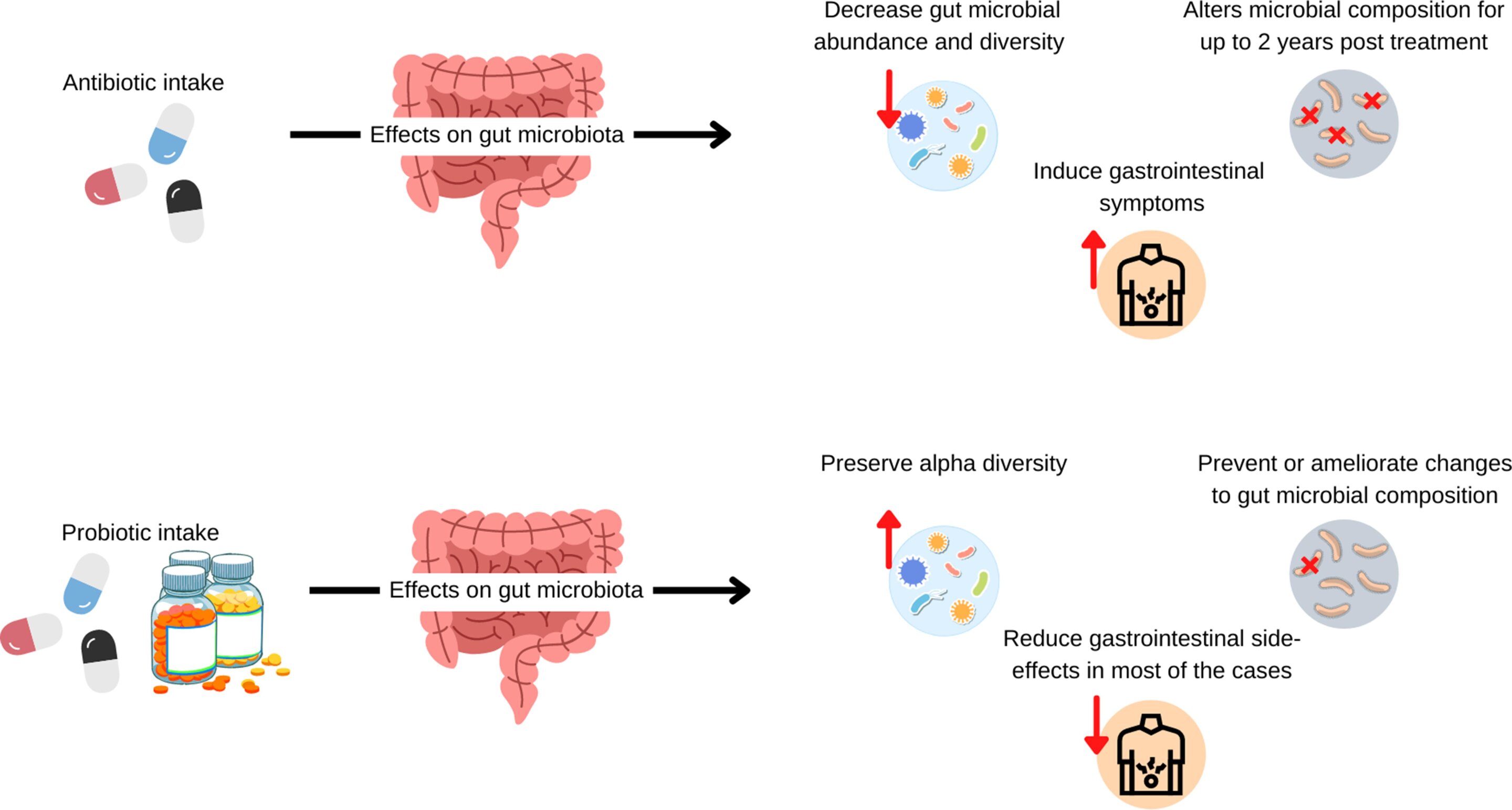
Alternative and Complementary Approaches to H. Pylori Treatment
While conventional antibiotic therapy remains the gold standard for H. pylori eradication, some patients and researchers have explored alternative or complementary approaches. These may include:
Probiotics
Certain probiotic strains may help support the effectiveness of antibiotic therapy and reduce treatment-related side effects. However, more research is needed to establish their role in H. pylori treatment definitively.
Dietary Modifications
Some studies suggest that certain foods and dietary compounds may have anti-H. pylori properties. These include:
- Green tea
- Garlic
- Honey
- Broccoli sprouts
While these may offer some benefits, they should not be considered a substitute for proven medical treatments.
Long-Term Management and Prevention of H. Pylori Reinfection
After successful H. pylori eradication, it’s important to focus on long-term digestive health and preventing reinfection. Consider the following strategies:
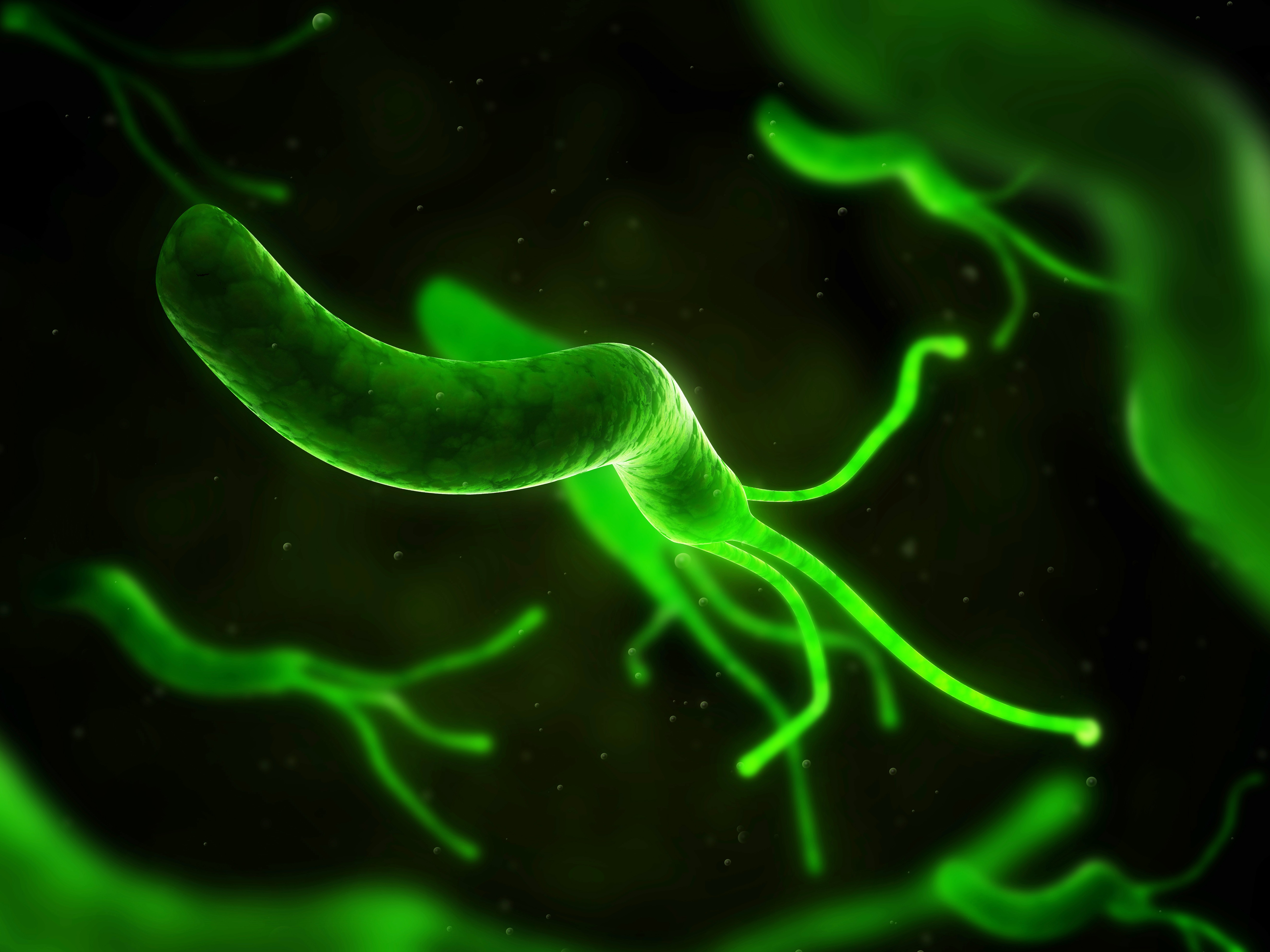
Maintain Good Hygiene
H. pylori can spread through contaminated food, water, or close personal contact. Practice good hygiene by:
- Washing hands thoroughly, especially before meals and after using the bathroom
- Ensuring access to clean water and properly prepared food
- Avoiding sharing utensils or drinking glasses with others
Follow-Up Testing
Your healthcare provider may recommend follow-up testing to confirm H. pylori eradication, typically 4-8 weeks after completing treatment. This may involve:
- Urea breath test
- Stool antigen test
- Blood antibody test (less reliable for confirming eradication)
Adopt a Healthy Lifestyle
While not directly related to H. pylori prevention, maintaining overall digestive health can support your body’s natural defenses. Consider:
- Eating a balanced diet rich in fruits, vegetables, and whole grains
- Limiting alcohol consumption
- Quitting smoking
- Managing stress through relaxation techniques or exercise
Emerging Research and Future Directions in H. Pylori Treatment
As antibiotic resistance becomes an increasing concern, researchers are exploring new approaches to H. pylori treatment and management. Some promising areas of study include:
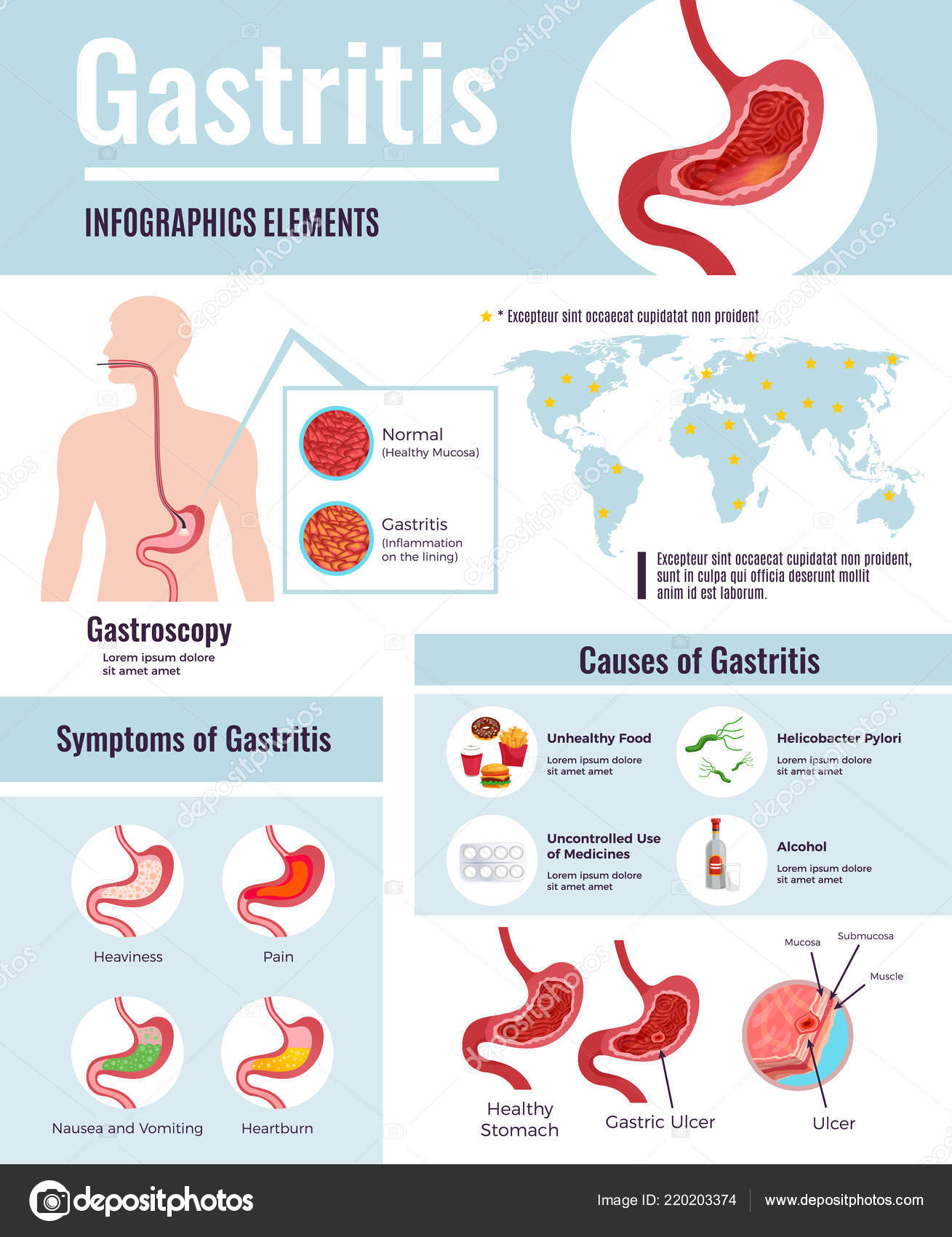
Vaccine Development
Scientists are working on developing vaccines against H. pylori, which could potentially prevent infection or boost the immune system’s ability to fight existing infections. While progress has been made, an effective vaccine is not yet available for widespread use.
Novel Antibiotic Combinations
Researchers are investigating new antibiotic combinations and treatment durations to improve eradication rates and combat antibiotic resistance. This includes exploring the potential of tailored treatments based on regional antibiotic resistance patterns.
Phage Therapy
Bacteriophages, viruses that specifically target bacteria, are being studied as a potential alternative or complement to traditional antibiotic therapy for H. pylori. This approach could offer a more targeted treatment with potentially fewer side effects.
Microbiome Modulation
Understanding the role of the gut microbiome in H. pylori infection and treatment is an active area of research. Future treatments may focus on modulating the microbiome to create an environment less hospitable to H. pylori or to enhance the effectiveness of existing treatments.
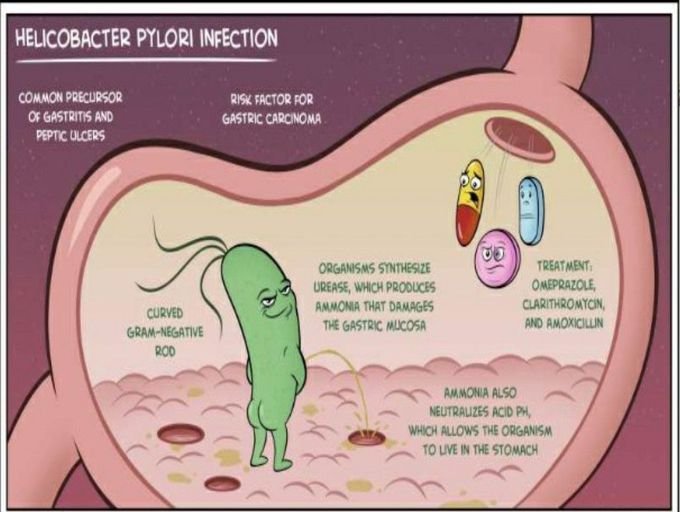
As research in these areas progresses, it’s important for patients and healthcare providers to stay informed about the latest developments in H. pylori management. This ongoing research holds promise for more effective, personalized, and potentially less disruptive treatments in the future.
Conclusion
H. pylori treatment, while generally effective, can come with side effects that patients should be prepared to manage. By understanding these potential complications and working closely with healthcare providers, patients can navigate their treatment course more comfortably and successfully. Remember, completing the full treatment regimen is crucial for eradicating H. pylori and preventing more serious complications down the line.
If you suspect you have an H. pylori infection or are experiencing persistent gastrointestinal symptoms, don’t hesitate to seek medical advice. Early detection and proper treatment can significantly improve outcomes and overall digestive health. Stay informed, be proactive about your health, and work collaboratively with your healthcare team to ensure the best possible results in managing H. pylori and maintaining long-term digestive wellness.
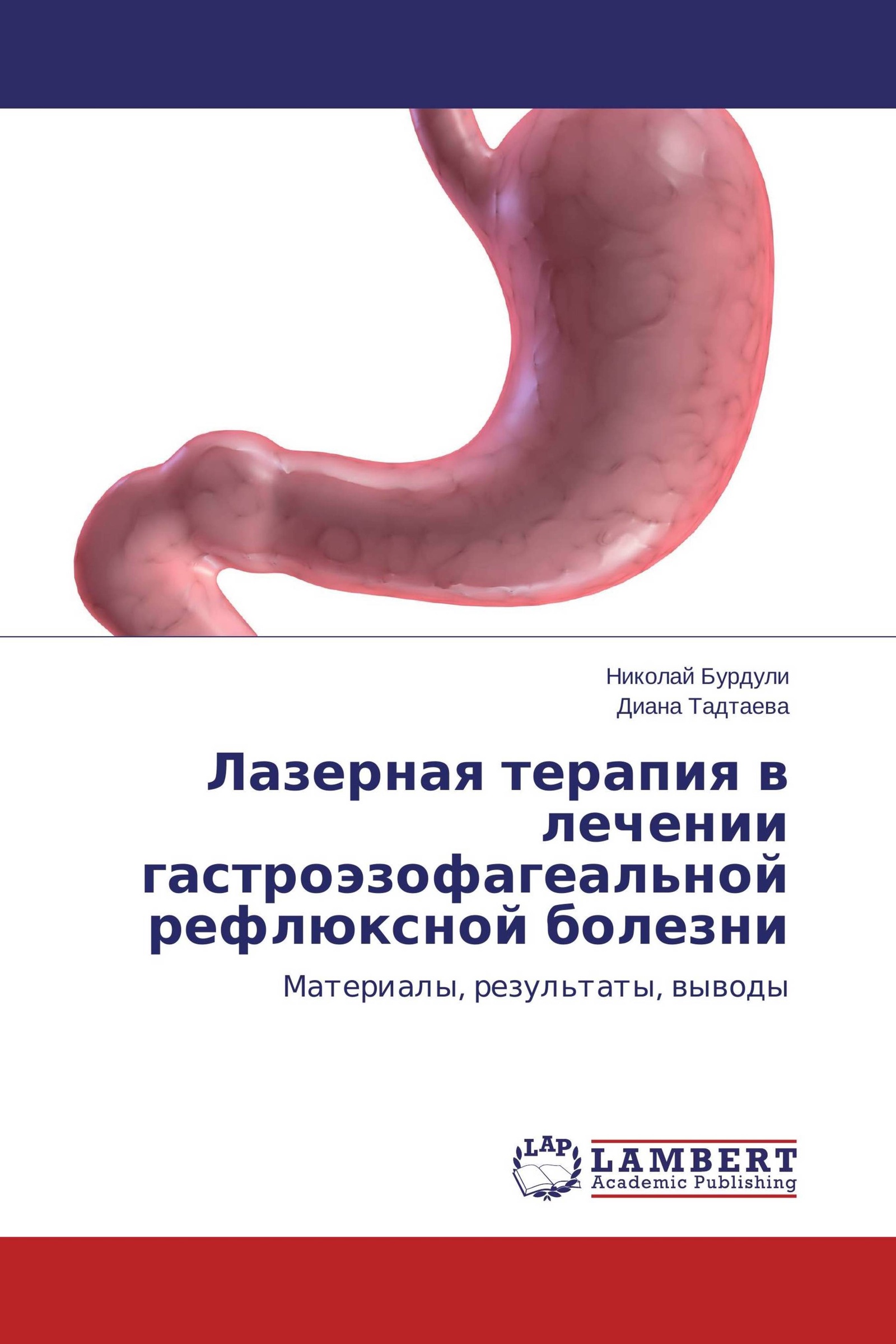
Some common side effects when treating Helicobacter Pylori
This is an automatically translated article.
The article was written by the Clinical Pharmacology Team, Vinmec Times City International General Hospital
Up to 50% of Helicobacter pylori treatment cases will experience side effects. However, these side effects are usually mild, transient, and only a small percentage (
1. What is Helicobacter pylori (H. pylori) bacteria?
Helicobacter pylori (H. pylori) is a bacteria that lives in the mucus lining of the stomach or duodenum. About 50% of the world’s population is infected with H. pylori, most of which will be asymptomatic. However, some may experience gastrointestinal problems such as inflammation, peptic ulcers, and, rarely, stomach cancer.
Treatment of H. pylori often requires a combination of drugs, including: drugs that reduce gastric acid secretion to facilitate ulcer healing, antibiotics and some other drugs to increase the effectiveness of H. pylori eradication or control symptoms. proof.
pylori eradication or control symptoms. proof.
2. Some side effects when treating Helicobacter pylori bacteria
Metallic taste in the mouth: This side effect is common with regimens containing metronidazol (Flagyl®) or clarithromycin (Klacid®). Drinking plenty of water, using some gum or mints can soften this metallic taste. Certain fruits or foods can also help reduce discomfort.
Red skin, headache, nausea, sweating, tachycardia: these effects can be seen when metronidazole (Flagyl®) is used with alcohol. Therefore, it is important to avoid alcohol while taking and after taking metronidazol (Flagyl®) for at least 24 hours.
Đỏ da, đau đầu, buồn nôn, vã mồ hôi, nhịp tim nhanh là một số tác dụng phụ khi điều trị vi khuẩn Helicobacter pylori
Black stools, constipation: bismuth can cause black tongue, black stools and cause constipation. Symptoms will go away on their own, especially at the end of treatment. However, care should be taken to distinguish it from melena due to gastrointestinal bleeding. Please talk to your doctor or pharmacist for support if you have black stools combined with some symptoms of gastrointestinal bleeding such as vomiting blood, abdominal pain, fatigue, paleness..
Please talk to your doctor or pharmacist for support if you have black stools combined with some symptoms of gastrointestinal bleeding such as vomiting blood, abdominal pain, fatigue, paleness..
Need attention. that it is very important to take the full medicine and complete the course of treatment, so if you experience any of the above side effects or any discomfort, please tell your doctor, pharmacist for advice. advise.
>> See more: Photodynamic therapy and vaccines in the treatment of helicobacter pylori – Posted by Master, Doctor Mai Vien Phuong – Gastroenterologist – Department of Examination & Internal Medicine – Hospital Vinmec Central Park International General Hospital
Please dial
HOTLINE
for more information or register for an appointment HERE.
Download MyVinmec app to make appointments faster and to manage your bookings easily.
youtube.com/watch?v=ojkhWULRIK4″> XEM THÊM:
- Omeclamox-Pak: Uses, indications and notes when using
- Is treatment necessary for HP in children?
- Should treat conjunctivitis mild antral mucosa with western medicine or take turmeric combined with honey?
Tags:
Dạ dày
Thuốc
Tiêu hóa
Bệnh đường tiêu hóa
Vi khuẩn HP
Vi khuẩn H. pylori
pylori
Điều trị dạ dày
Điều trị Helicobacter pylori
Risks of an Untreated H. pylori Infection
H. pylori (Helicobacter pylori) is a type of bacteria that causes a stomach infection. It is a very common infection. Most people get infected with Helicobacter pylori bacteria during childhood. Indeed, it is estimated that more than half the world’s population has H. pylori. But most people don’t realize they have this infection because they never get any symptoms from it. Some people, however, can get sick with gastritis (stomach inflammation) or peptic ulcer disease (stomach ulcers). If symptoms are present and a doctor diagnoses Helicobacter pylori, it can be treated with certain medicines.
Please continue reading to learn more about Helicobacter pylori infection, including its symptoms, how it spreads, and how it is diagnosed and treated. We will also talk about the risks of leaving it untreated and what you can do to prevent H.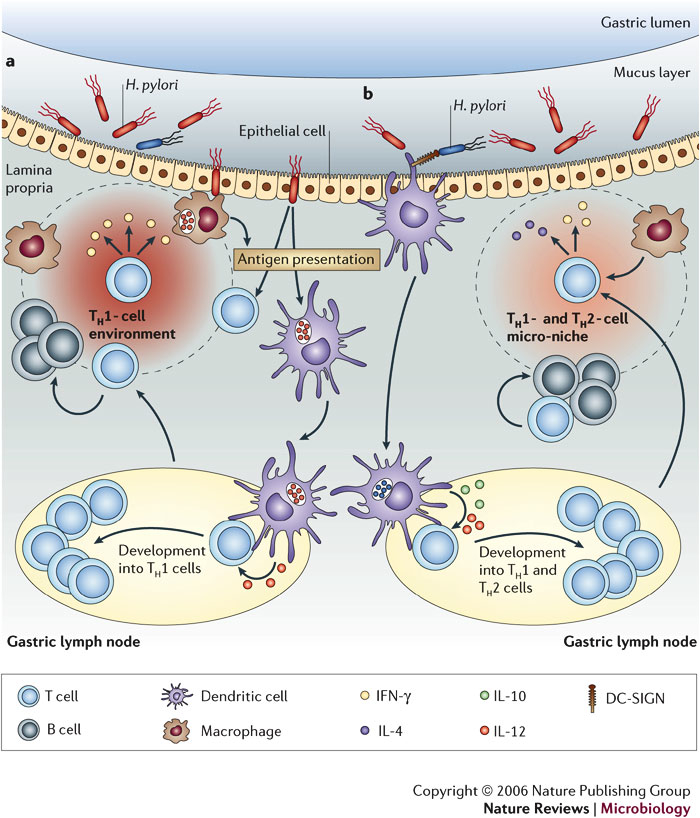 pylori infection.
pylori infection.
What is Helicobacter pylori infection?
As mentioned, Helicobacter pylori is a bacteria that infects the stomach and duodenum (start of the small intestine). The infection usually occurs in children, but only 1 in 5 people with Helicobacter pylori infection develop any symptoms.
In some people, the bacteria can irritate the stomach’s mucous lining and cause symptoms of H. pylori gastritis and peptic ulcers. In fact, H. pylori is the most common cause of stomach ulcers. If H. pylori symptoms are present, a healthcare provider can treat them with a combination of medications, including antibiotics and proton pump inhibitors (acid-reducing medications).
Who is at risk of getting H. pylori?
Experts estimate that 50-75% of people in the world have H. pylori. The infection usually occurs during childhood. Most people do not develop an illness.
H. pylori infections are more common in parts of the world where people do not have access to clean drinking water. They are more prevalent among people in developing nations where living conditions are crowded with poor sanitary facilities, leading to increased chances of eating contaminated food.
They are more prevalent among people in developing nations where living conditions are crowded with poor sanitary facilities, leading to increased chances of eating contaminated food.
In the United States, in children under age 10, about 5% have Helicobacter pylori infections.
How is H. pylori transmitted?
H. pylori can be transmitted among people. The bacteria are present in saliva, teeth plaque, and stool. The infection can spread if a person does not wash their hands thoroughly after using the bathroom. The bacteria can also be transferred by kissing and by consuming contaminated food and water.
How bad can H. pylori get?
Most people with H. pylori infections don’t have symptoms. About 20% of people develop signs and symptoms of inflammation in the digestive tract, stomach ulcers, and duodenal ulcers.
The most common symptom of H. pylori infection is a dull or burning pain in the abdomen that often occurs after meals. In some people, the stomach pain is worse on an empty stomach. The abdominal pain can wax and wane, lasting for several hours.
The abdominal pain can wax and wane, lasting for several hours.
Besides belly pain, other symptoms of Helicobacter pylori infection include bloating, indigestion, frequent burping, nausea, vomiting with bloody vomit (looks like coffee grounds), poor appetite, unintended weight loss, and dark stools.
How do doctors diagnose H. pylori?
If your doctor suspects you might have Helicobacter pylori infection based on your symptoms and physical exam, they may ask for some tests, such as:
Breath Tests
A breath test involves breathing out into a test bag, drinking a test solution, and exhaling into the test bag again. This measures how much carbon dioxide is released in the breath. In people with H. pylori infection, there is more carbon dioxide in the breath after they drink the test solution.
Stool Tests
A polymerase chain reaction (PCR) stool test can be done to detect H. pylori bacteria in the stool.
Upper Endoscopy
Doctors can perform a minimally-invasive imaging study called an upper endoscopy.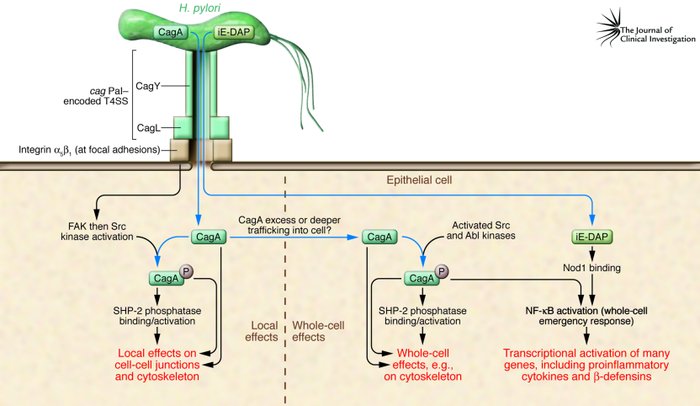 This involves inserting a thin, flexible tube through the mouth into the belly. The tube has a camera that allows doctors to see the stomach lining. A small sample of the stomach’s lining can be taken and tested in the laboratory to check for H. pylori.
This involves inserting a thin, flexible tube through the mouth into the belly. The tube has a camera that allows doctors to see the stomach lining. A small sample of the stomach’s lining can be taken and tested in the laboratory to check for H. pylori.
How do doctors treat H. pylori?
Those who have a diagnosis of H. pylori infection are usually treated with multiple medications, including antibiotics and proton pump inhibitors (acid reducers). This is because H. pylori infections can be hard to treat. One medicine cannot cure the infection. The treatment for H. pylori infection usually lasts 14 days.
Doctors typically prescribe two antibiotics to clear the infection. Common choices of antibiotics include amoxicillin, tetracycline, clarithromycin (Biaxin), and metronidazole (Flagyl). In addition, doctors prescribe proton pump inhibitors such as pantoprazole (Protonix), omeprazole (Prilosec), lansoprazole (Prevacid), esomeprazole (Nexium), and rabeprazole (Aciphex).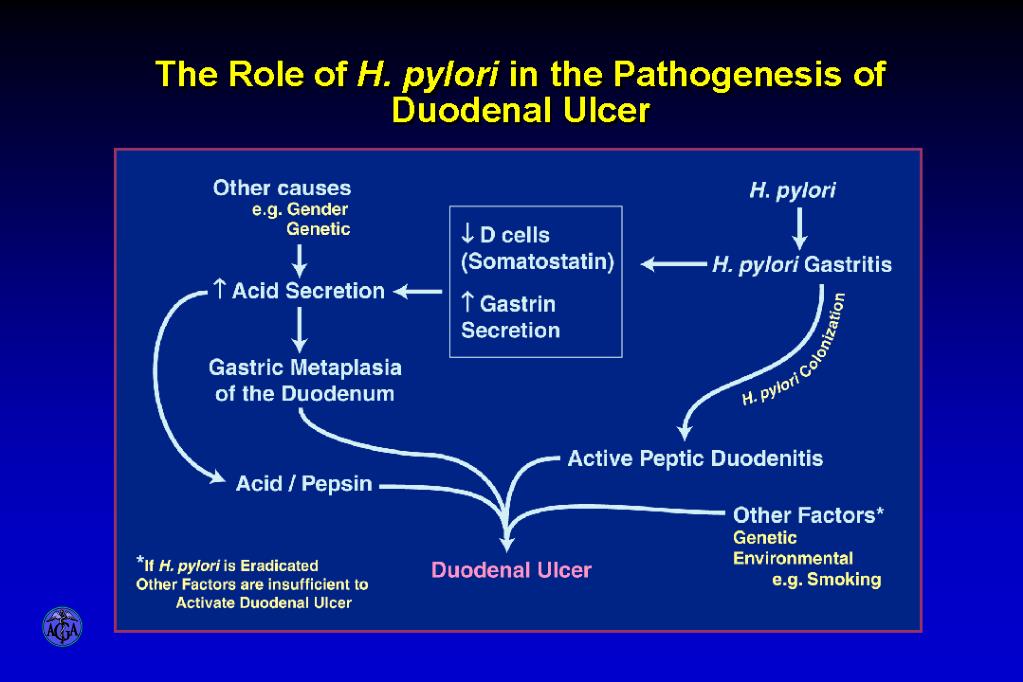 A drug called bismuth subsalicylate (Pepto-Bismol) may also be included in the treatment regimen to protect the stomach cells.
A drug called bismuth subsalicylate (Pepto-Bismol) may also be included in the treatment regimen to protect the stomach cells.
For the sake of convenience (to avoid taking a large number of pills every day), a relatively new pill called Talicia has been developed. It is a capsule that contains two antibiotics (amoxicillin and rifabutin) plus omeprazole. Other treatments like Tritec (bismuth plus a stomach acid reducer) or Helidac (bismuth plus two antibiotics) are also available. Your doctor can help you decide on the best medicine for H. pylori infection.
Does H. pylori go away without treatment?
There have been some reports that in a small number of people H. pylori may disappear and reappear in the stomach lining without a specific antibiotic regimen. However, the natural history of H. pylori infections is not completely understood. The only way to cure H. pylori is by taking the medicines your doctor prescribes.
What will happen if H. pylori goes untreated?
Because treatment of Helicobacter pylori infections requires taking so many medications, it can cause side effects. These side effects are usually minor and go away in a few days. If you stop taking the medications because of side effects or forget to take some of the medicines, your H. pylori infection will not be cured. This may cause worsening symptoms in the future, including peptic ulcers.
These side effects are usually minor and go away in a few days. If you stop taking the medications because of side effects or forget to take some of the medicines, your H. pylori infection will not be cured. This may cause worsening symptoms in the future, including peptic ulcers.
You should tell your doctor if you have side effects from H. pylori medicines. Your doctor may give you different medicines or give you something to make the side effects better.
What happens if you have H. pylori for years?
Antibiotic treatment can clear the infection and protect the stomach lining. But if you leave H. pylori infection untreated, it can lead to serious complications, including:
Gastritis and Peptic Ulcer Disease
The H. pylori bacteria can multiply in the stomach lining over the years. To survive in the acidic environment of the stomach, the bacteria secrete an enzyme called urease. This enzyme converts urea to ammonia, and the ammonia protects H. pylori from stomach acids. This allows H. pylori to multiply and destroy the stomach tissue. Over time, this can lead to gastritis and/or gastric ulcer. If you have symptoms of H. pylori infection, you should avoid taking nonsteroidal anti-inflammatory drugs. These medicines can increase the risk of developing a stomach ulcer or duodenal ulcer, which can cause internal bleeding in the abdominal cavity.
pylori from stomach acids. This allows H. pylori to multiply and destroy the stomach tissue. Over time, this can lead to gastritis and/or gastric ulcer. If you have symptoms of H. pylori infection, you should avoid taking nonsteroidal anti-inflammatory drugs. These medicines can increase the risk of developing a stomach ulcer or duodenal ulcer, which can cause internal bleeding in the abdominal cavity.
Stomach Cancer
People who have Helicobacter pylori are at an increased risk of developing stomach cancer later in life. According to the National Cancer Institute, the risk that a person will develop stomach cancer can be nearly 6 times higher in infected people compared to healthy people. The risk of stomach cancer is higher in individuals who have a strong family history of stomach cancer or other risk factors for cancer. If this is the case, healthcare providers may recommend getting tested for H. pylori antibodies and/or coming in for regular checkups.
How can I prevent H.
 pylori infection?
pylori infection?
You can lower your risk of Helicobacter pylori infection by ensuring you drink clean water and use clean water during food preparation. You should also make sure you wash your hands thoroughly with soap and water for at least 20 seconds after using the toilet.
Is there a vaccine for H. pylori?
Despite the large number of people who get H. pylori infections, an H. pylori vaccine has not been a priority for Big Pharma. There is, however, one vaccine to prevent H. pylori under development that has shown promising early results. Children who got this vaccine during trials were protected against H. pylori infection for up to 3 years.
References:
- https://www.mayoclinic.org/diseases-conditions/h-pylori/symptoms-causes/syc-20356171
- https://my.clevelandclinic.org/health/diseases/21463-h-pylori-infection
- https://www.aafp.org/afp/2003/1115/p2028.html
- https://pubmed.ncbi.nlm.nih.gov/9113817/
- https://www.
 cancer.gov/about-cancer/causes-prevention/risk/infectious-agents/h-pylori-fact-sheet
cancer.gov/about-cancer/causes-prevention/risk/infectious-agents/h-pylori-fact-sheet
Helicobacter pylori. Information for patients
Helicobacter pylori – (Helicobacter pylori, Helicobacter pylori infection, Helicobacter pylori) is a bacterium that affects the pyloric stomach and duodenum.
The picture shows the stomach, esophagus, duodenum, pyloric stomach
This infection is very common in the world, it occurs in almost 50% of the world’s population.
Science has been familiar with bacteria that can survive in the aggressive acidic environment of the stomach for more than a hundred years. But only in the 70s of the last century, doctors discovered a connection between these bacteria and gastritis.
The photo shows Helicobacter pylori
Even after 10 years, a deeper understanding of the influence of these microorganisms on diseases of the gastrointestinal tract came. Then it was possible to isolate and cultivate the bacterium Campylobacter pyloridis (Campelobacter pyloridis), named after further study and final classification Helicobacter pylori (Helicobacter pylori) .
Cholelithiasis. Information for patients.
On the anatomy and functions of the gallbladder. Stones (stones…
Helicobacter pylori. Figures and facts
It is believed that 75% of the global burden of gastric cancer is associated with infection with Helicobacter pylori.
Stomach cancer is 6 times more common in people with Helicobacter pylori than in those who are not infected.
According to research results, from 60 to 100% of stomach ulcers are associated with Helicobacter pylori.
How does Helicobacter pylori survive in the acidic environment of the stomach? The fact is that the bacterium has long flagella, with which it penetrates under the mucous membrane. The mucous membrane protects the walls of the stomach, and, therefore, the bacterium itself, from the effects of hydrochloric acid.
In addition, in the course of its life, the microorganism forms a cloud of an alkaline environment around itself. This allows Helicobacter pylori to survive in the aggressive environment of the gastrointestinal tract.
This allows Helicobacter pylori to survive in the aggressive environment of the gastrointestinal tract.
Helicobacter pylori infection can cause a number of problems, including extremely serious ones:
- Gastritis
- Duodenitis
- Gastric ulcer
- Duodenal ulcer
- Iron deficiency
- Stomach cancer
There are cases when a person has symptoms of damage to the stomach and / or duodenum, but no objective signs of the disease are found. This is called functional dyspepsia.
Despite a large body of scientific research, it is still unknown why some people infected with Helicobacter pylori do not have any health problems, while others have serious illnesses.
Prevalence of Helicobacter pylori infection
According to the most conservative estimates, Helicobacter pylori occurs in 50% of the world’s population. In developed countries, predominantly the adult population is infected. In countries with a low socio-economic standard of living, infection is detected even in children under the age of 10 years.
In developed countries, predominantly the adult population is infected. In countries with a low socio-economic standard of living, infection is detected even in children under the age of 10 years.
Hiccup. General information.
Classification of hiccups by its duration. Causes of fuss …
How is Helicobacter pylori transmitted?
Despite a large number of long-term studies, the transmission routes of the Helicobacter pylori bacterium have not yet been accurately established. There are three main versions about the ways of transmission of bacteria:
- fecal-oral
- oral-oral
The fecal-oral route of transmission of the bacterium Helicobacter pylori is considered today the main route of transmission, i.e. The bacterium enters the human body through contaminated water, food, if hygiene rules are not followed.
At one time, Helicobacter pylori was detected in the saliva and plaque of infected people, and there is reason to believe that the microorganism can be transmitted by the oral-oral route, for example, through kisses, common personal items.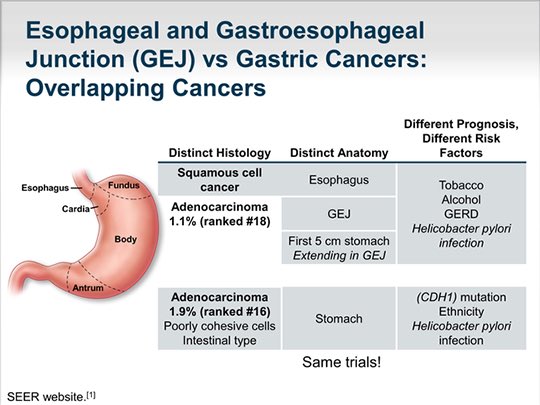
A number of studies have demonstrated a hereditary predisposition to Helicobacter pylori infection, but, nevertheless, the hereditary factor is not proven.
Bacteria were also detected in the saliva and stomach of cats and sheep, but the role of animals in the transmission of infection is still unknown to science.
Helicobacter pylori symptoms
As mentioned above, in most cases, Helicobacter pylori does not manifest itself in any way. If the infection caused the disease, then symptoms characteristic of a particular disease appear. Most often it is:
- Pain or discomfort in the upper abdomen
- Bloating
- Nausea, vomiting
- Feeling of full stomach after eating a small amount of food
- Heartburn
- Symptoms characteristic of iron deficiency
- Black chair
Not all ulcers and/or inflammatory diseases of the stomach or duodenum are caused by Helicobacter pylori infection. They can develop while taking medications, such as painkillers.
They can develop while taking medications, such as painkillers.
How is Helicobacter pylori detected?
There are several tests that can detect whether a person is infected with Helicobacter pylori.
How to properly collect material for urine and stool tests
Information about the general clinical analysis of urine
Directly…
- Blood test. It is important to understand that a blood test only demonstrates that the patient has met with a Helicobacter pylori infection and cannot answer the question of whether there is a disease at a given time.
- Analysis of feces for antigen to Helicobacter pylori.
- Urease breath test
- Biopsy
Helicobacter pylori testing is indicated in the following cases:
- presence of upper gastrointestinal symptoms
- diagnosed (as well as previously diagnosed) peptic ulcer of the stomach or duodenum
The doctor may recommend a study on the carriage of Helicobacter pylori in other cases:
- Family history of stomach cancer
- Atrophic gastritis
- Iron deficiency
If a person does not have symptoms of a Helicobacter pylori infection, then there is no need for an examination. “Just in case” there is no point in conducting surveys.
“Just in case” there is no point in conducting surveys.
Should gastroscopy (esophagogastroduodenoscopy, FGDS, endoscopic examination of the stomach and duodenum) be performed in case of suspicion or control of the treatment of Helicobacter pylori infection?
Suspicion of the presence of Helicobacter pylori infection is not an indication for endoscopic examination. But this study can be prescribed if the doctor suspects, for example, a bleeding ulcer. Typically, during the study, 90,005 biopsies of 90,002 stomach tissues are performed. A biopsy allows you to identify Helicobacter pylori in a biopsy (a piece of stomach tissue). However, the absence of bacteria in the biopsy does not exclude infection.
How to treat Helicobacter pylori infection?
Usually, the treatment of diseases caused by Helicobacter pylori requires the appointment of three or more drugs. Two of them are antibiotics. The treatment regimen also necessarily includes a drug from the group of proton pump inhibitors, the most famous representative is omeprazole (omez) and bismuth preparations. Treatment lasts from ten to fourteen days.
Treatment lasts from ten to fourteen days.
The diagram shows the doctor’s approach to the choice of treatment for a patient with Helicobacter pylori
It is important to complete the full course of treatment.
Early symptoms of cancer. How do patients react to them?
Cancer is one of the leading causes of morbidity and mortality…
Timely treatment (eradication) of Helicobacter pylori infection will avoid many problems.
Treatment contributes to the rapid healing of gastric and duodenal ulcers, the resolution of iron deficiency and / or increase the effectiveness of its treatment, and also reduces the risk of recurrence of peptic ulcer and ulcer bleeding, reduces the risk of developing stomach cancer.
Re-infection with Helicobacter pylori is rare. A number of studies have shown that no more than 2% of patients per year are susceptible to reinfection.
Side effects. Diet
Treatment of diseases caused by the bacterium Helicobacter pylori may be accompanied by side effects, but they are usually minor and fairly easily tolerated.
Antibiotics, for example, often cause a metallic taste in the mouth.
Diarrhea and spastic pains are possible.
If bismuth preparations are present in the regimen, they can lead to constipation and dark stools.
If metronidazole is present in the treatment regimen, alcohol should be avoided during the period of therapy.
If a patient experiences side effects, they should contact their doctor, who will advise on how to minimize these side effects or take other actions aimed at preventing the negative effects of drugs.
An additional diet is usually not required, that is, the patient can eat any habitual food that does not cause discomfort.
Peptic ulcer of the stomach and duodenum
Peptic ulcer of the stomach and duodenum is for …
How effective is the treatment? Is it necessary to control the result?
Modern treatment regimens are very effective. This is confirmed by control studies that determine the outcome of eradication.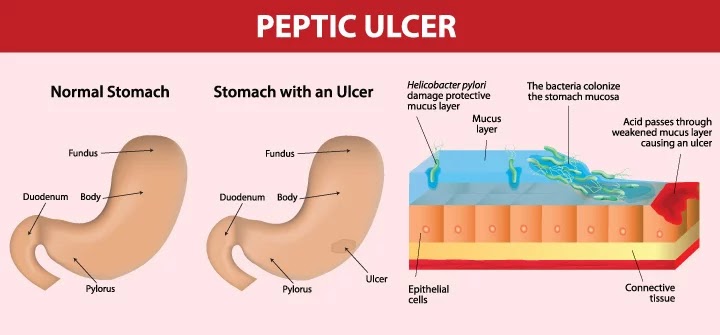 An effective therapy is one in which Helicobacter pylori completely disappears from the body. But about 20% of people are not cured after the first course of therapy. This usually requires either extending treatment for another two weeks or changing at least one antibiotic.
An effective therapy is one in which Helicobacter pylori completely disappears from the body. But about 20% of people are not cured after the first course of therapy. This usually requires either extending treatment for another two weeks or changing at least one antibiotic.
Commonly used for performance monitoring:
- Urease breath test
- Examination of feces for antigen to Helicobacter pylori.
Eradication therapy for Helicobacter pylori infection: a review of global trends
Helicobacter pylori (H. pylori) infection is one of the most common infections in humans today. More than 3 billion inhabitants of the Earth are infected with this microorganism [1, 2]. Clinical Significance H. pylori is determined by its leading role in the formation of chronic gastritis, gastric and duodenal ulcer, MALT lymphoma, and gastric adenocarcinoma [1, 3]. In addition, there are already reliable data on the association of H. pylori infection with idiopathic iron deficiency anemia and idiopathic thrombocytopenic purpura [4, 5].
pylori infection with idiopathic iron deficiency anemia and idiopathic thrombocytopenic purpura [4, 5].
Since the discovery of the etiopathogenetic role H. pylori in the development of gastroduodenal pathology, eradication therapy (ET) for infection has been considered as the main method of treatment and prevention associated with H. pylori diseases, which is reflected in a number of international and national consensus documents [6, 7]. At the same time, despite the significant passed period, aspects of the treatment of infection continue to be actively investigated. This is largely determined by the lack of an ideal ET regimen that would ensure a consistently maximum success in the elimination of the microorganism in all patients.
In turn, widely used ET regimens are characterized by unstable results and a tendency to decrease in efficiency, which correlates with the growth of antibiotic resistance of the microorganism in the world [8].
Antibiotic resistance H. pylori . Currently, antibiotic resistance H. pylori is considered as the main factor determining the effectiveness of one or another ET regimen [6, 9, 10]. Thus, the population level of resistance is fundamental for choosing an ET regimen, which is reflected in the IV International Maastricht Agreement (2010), which regulates the standards for diagnosis and treatment of infection H. pylori [6].
According to the literature, the prevalence of resistant strains H. pylori is increasing worldwide [9, 11, 12]. It should be noted that in modern Europe over the past decades, population migration flows have changed the overall map of antibiotic resistance both within the country and within individual cities [13]. At the same time, prevalence rates vary in different geographical areas, correlating with the overall frequency of antibiotic use in the population [11].
Resistance of H. pylori to the underlying antibiotics used in first-line ET regimens is of the highest clinical significance.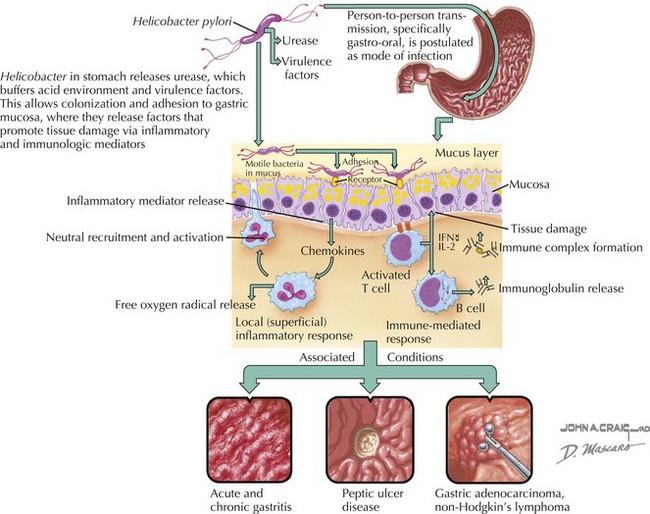 According to a systematic review by V. De Francesco et al. [12] the problem of resistance is most acute in relation to metronidazole and clarithromycin, while resistance to amoxicillin remains at a low level in most regions of the world (see figure) [12]. antibacterial drugs of the first line of ET in the world [12].
According to a systematic review by V. De Francesco et al. [12] the problem of resistance is most acute in relation to metronidazole and clarithromycin, while resistance to amoxicillin remains at a low level in most regions of the world (see figure) [12]. antibacterial drugs of the first line of ET in the world [12].
In turn, most researchers noted that resistance to clarithromycin has a higher clinical significance compared to resistance to metronidazole [14].
The upward trend in H. pylori resistance to clarithromycin is clearly visible in European countries. Thus, the overall resistance to clarithromycin in this part of the world increased from 9% (1998) to 17.6% (2008-2009) [12, 15, 16]. In the Russian Federation, the real level of resistance is H. pylori to clarithromycin is unknown, 10 years ago it approached, but did not exceed 20% [17].
Resistance H. pylori to nitroimidazole derivatives (metronidazole and tinidazole) has a fairly wide geographical boundaries. The highest resistance rates were found in African countries – 92.4% (with 95% confidence interval – CI from 88.4 to 96.3%), and the lowest in Europe – 17% (with 95% CI from 15.5 to 18 .5%) [12]. In the Russian Federation, metronidazole resistance rates reported by the Russian Study Group H. pylori stabilized in 2001 at a high level of 55% [17].
The highest resistance rates were found in African countries – 92.4% (with 95% confidence interval – CI from 88.4 to 96.3%), and the lowest in Europe – 17% (with 95% CI from 15.5 to 18 .5%) [12]. In the Russian Federation, metronidazole resistance rates reported by the Russian Study Group H. pylori stabilized in 2001 at a high level of 55% [17].
So far, no increase in H. pylori resistance to amoxicillin has been identified in the world, which makes it the most important element in ET regimens [12, 14].
Sequence of ET schemes under the IV Maastricht Agreement. In accordance with the IV Maastricht Agreement, the main attention in choosing a scheme should be paid to data on the prevalence of resistant strains H. pylori to clarithromycin in the region, since the growth of microorganism resistance to this antibiotic is directly associated with a decrease in the effectiveness of standard ET regimens [6, 12, 14, 18]. The basic initial ET regimens are the first-line protocols; in case of their inefficiency, the transition to the second-line regimens without determining antibiotic resistance is regulated (see table) [6, 18].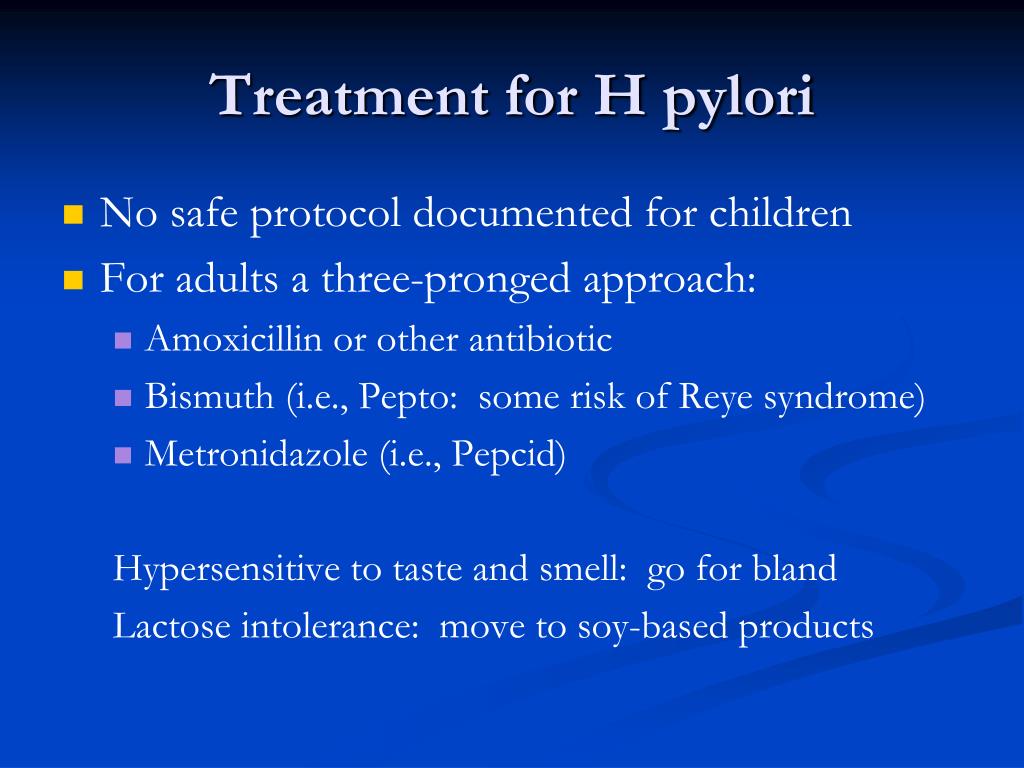
First row ET. Triple Therapy (TCT) . In regions with low H. pylori resistance to clarithromycin (less than 20%), TCT, including PPI, clarithromycin, and amoxicillin/metronidazole, is regulated as first-line ET. At the same time, the replacement of amoxicillin with metronidazole does not provide any advantages, since the effectiveness of these antibiotics in TCT schemes is considered as equivalent [6, 7, 18]. However, the high level of resistance to metronidazole makes the widespread use of this drug in TCT schemes in Russia unreasonable. However, TKT with metronidazole can be used in patients allergic to penicillin derivatives in regions with a low level of resistance H. pylori to clarithromycin [6, 10].
The TKT scheme remains one of the most popular in the world. However, over the past decade, the effectiveness of this regimen has declined sharply, and in regions with a high prevalence of clarithromycin-resistant strains in the population, its effectiveness rarely exceeds 80% [9, 19, 20].
Nevertheless, a number of recent studies indicate a sufficient level of eradication with the use of TCT. So, according to J. Gisbert et al. [21], the effectiveness of TCT in Spain over 10 years (1997-2008) did not decrease and amounted to 80%. In South Korea, in a single-center retrospective study by J. Yoon et al. [22] found no negative dynamics of the effectiveness of 14-day TKT over 10 years (2000-2010). The effectiveness of this scheme varied from 83.3 to 90.5%. In a multicenter study performed in Japan (2012), data were also obtained on the sufficient effectiveness of a 7-day course of TCT, which amounted to 80.7%, while the incidence of side effects was at a minimum level (4.4%) [23]. In general, these data confirm the relevance of the widespread use of the three-component ET scheme in many parts of the world.
Bismuth Quadruple Therapy (PCT) . Bismuth-based PCCT (PPI + metronidazole + tetracycline + bismuth tripotassium dicitrate) is recommended in regions with high H. pylori resistance to clarithromycin (greater than 20%) as first-line ET. This regimen is also appropriate for use as an alternative to TKT in regions with a low prevalence of strains resistant to clarithromycin, as well as in patients allergic to penicillin derivatives [6, 10, 18].
pylori resistance to clarithromycin (greater than 20%) as first-line ET. This regimen is also appropriate for use as an alternative to TKT in regions with a low prevalence of strains resistant to clarithromycin, as well as in patients allergic to penicillin derivatives [6, 10, 18].
In a study by M. Dore et al. [24] Bismuth-based PCT was highly effective: 95 and 94% for the 14- and 10-day protocol, respectively. In China, according to M. Xu et al. [25], a 7-day PCT with a bismuth preparation was 15% more effective than a similar duration of PCT. Nevertheless, it is worth noting that the optimal duration of this ET protocol has not been determined and, most likely, is individual for different regions of the world, although the 10- and 14-day regimens are the most studied [8].
PCT without bismuth preparations . In a number of countries, for example, in France, bismuth preparations are prohibited, therefore, as an alternative to first-line ET in regions with high resistance H. pylori to clarithromycin, it is worth considering PCT that does not contain bismuth preparations (PPI + clarithromycin + amoxicillin + metronidazole) [6 ]. According to some authors, this ET protocol is one of the most promising in the context of increasing antibiotic resistance [8, 26, 27]. The recently completed J.P. Gisbert et al. [27] meta-analysis combining data 19studies (2090 patients), demonstrated the high efficiency of this scheme at the level of 88%. In a study conducted in Japan (2012), the efficacy of 7-day TCTS without bismuth preparations was 94.9% compared to 68.3% of 7-day TCTS. At the same time, the incidence of side effects did not significantly differ between these regimens [28].
pylori to clarithromycin, it is worth considering PCT that does not contain bismuth preparations (PPI + clarithromycin + amoxicillin + metronidazole) [6 ]. According to some authors, this ET protocol is one of the most promising in the context of increasing antibiotic resistance [8, 26, 27]. The recently completed J.P. Gisbert et al. [27] meta-analysis combining data 19studies (2090 patients), demonstrated the high efficiency of this scheme at the level of 88%. In a study conducted in Japan (2012), the efficacy of 7-day TCTS without bismuth preparations was 94.9% compared to 68.3% of 7-day TCTS. At the same time, the incidence of side effects did not significantly differ between these regimens [28].
Sequential therapy. Serial ET (first 5 days PPI + amoxicillin followed by 5 days PPI + clarithromycin + tinidazole/metronidazole) is currently one of the most studied ET regimens worldwide. In many ways, this interest of the world medical community is dictated by the high efficiency of sequential therapy [8, 10, 18]. Under the IV Maastricht Agreement, this ET protocol is regulated as an alternative first-line regimen in regions with high resistance H. pylori to clarithromycin [6].
Under the IV Maastricht Agreement, this ET protocol is regulated as an alternative first-line regimen in regions with high resistance H. pylori to clarithromycin [6].
In a series of clinical trials conducted in Italy and Spain (2003-2007), each of which included at least 100 patients, sequential ET showed very promising results with an eradication rate of 91 to 95% [29-31]. Based on more recent research, the effectiveness of sequential therapy has been proven in many regions of the world. So, in Israel, in the study of H. Schmilovitz-Weiss et al. [32] the effectiveness of sequential therapy was 95.8%.
In South Korea, Y. Kim et al. [33], the effectiveness of 10-day sequential therapy was 92.6% compared with 85% of 14-day TCT without differences in the frequency of side effects. Similar data were obtained in Taiwan in a study by F. Tsay et al. [34], in which the effectiveness of sequential therapy was 13% higher than TCT with a comparable incidence of side effects.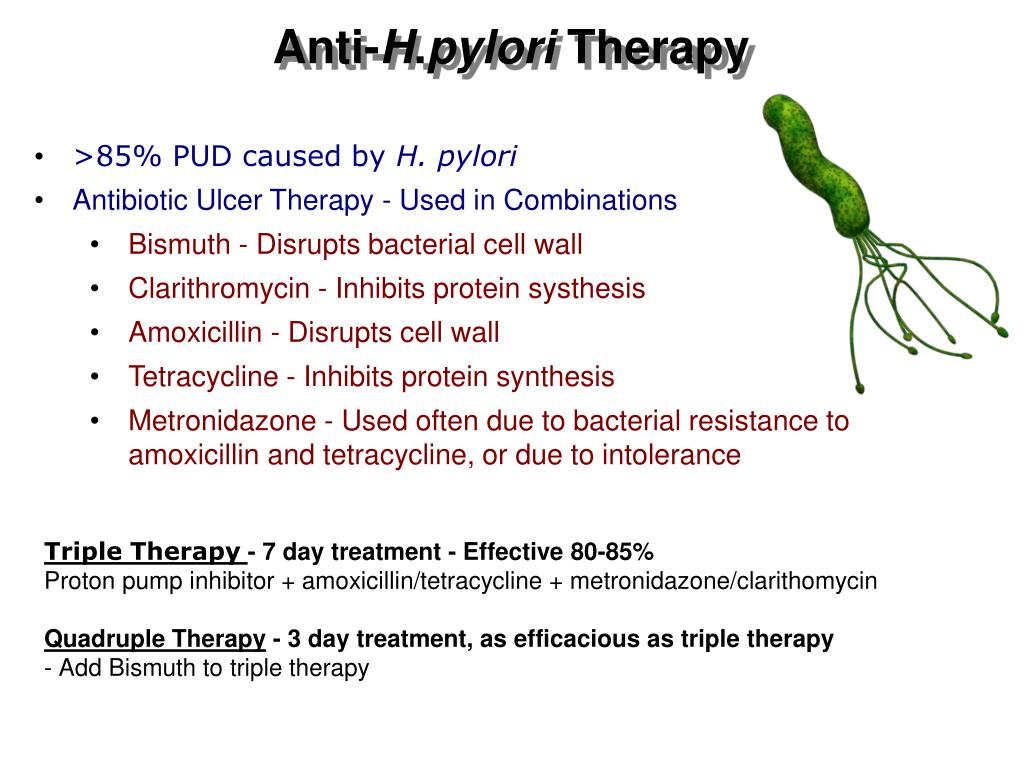 These results are supported by a recent systematic review by V. Kate et al. [35], which analyzed the results of 17 randomized controlled trials comparing the effectiveness of sequential and three-component ET regimens. Thus, a higher efficiency of sequential therapy was noted in 12 studies, in 4 there were no significant differences between the two protocols, and only in 1 study was TCT more effective than sequential therapy [35].
These results are supported by a recent systematic review by V. Kate et al. [35], which analyzed the results of 17 randomized controlled trials comparing the effectiveness of sequential and three-component ET regimens. Thus, a higher efficiency of sequential therapy was noted in 12 studies, in 4 there were no significant differences between the two protocols, and only in 1 study was TCT more effective than sequential therapy [35].
Second row ET. PCT based on bismuth preparations . For regions with a low prevalence of H. pylori -resistant strains to clarithromycin, second-line therapy according to the Maastricht Agreement IV in case of failure of first-line TCT is PCT based on bismuth preparations [6]. It should be noted that this scheme is ineffective as a second-line therapy in 5-63% of cases [36, 37]. Low results may be due to the high prevalence of resistant strains to metronidazole, as well as a short course of therapy (7 days) [38].
Therefore, it is recommended that the latter factors be considered when designating this regimen as second-line ET.
TKT with levofloxacin . In regions with a high prevalence of strains resistant to clarithromycin H. pylori , according to the IV Maastricht Agreement, second-line therapy in case of failure of first-line PCT is TCT with levofloxacin (PPI + amoxicillin + levofloxacin) [6, 18].
It should be noted that TCT with levofloxacin is quite effective when used as first-line therapy [8, 10]. So, according to M. Berning et al. [39], this protocol provides effective eradication in 72-96% of cases. However, the Maastricht Agreement IV advisory board warns against using TCT with levofloxacin as first-line therapy given the growing level of resistance to levofloxacin, which may jeopardize the effectiveness of this protocol in the future [6].
The use of TKT with levofloxacin as second-line ET shows encouraging results. So, according to the meta-analysis of J. Gisbert et al. [40], this protocol provides a higher level of eradication compared to PCT based on bismuth preparations (81 and 70%, respectively) after the failure of the classical PCT regimen. Two randomized controlled trials in Taiwan (2006) and Hong Kong (2009)) have shown that TCT with levofloxacin is comparable in efficacy to TCT based on bismuth preparations when used as second-line ET [41, 42].
Two randomized controlled trials in Taiwan (2006) and Hong Kong (2009)) have shown that TCT with levofloxacin is comparable in efficacy to TCT based on bismuth preparations when used as second-line ET [41, 42].
Other fluoroquinolones could theoretically be used instead of levofloxacin in a triple ET regimen. So, in the study by S. Miehlke et al. [43], the use of TCT with moxifloxacin as a second-line therapy achieved 78.9 and 95% efficiency in 7- and 14-day courses, respectively.
Third row ET. At present, there are no standard treatment regimens in the European guidelines in case of failure of second-line ET [38]. According to the documents of the IV Maastricht Agreement, the choice of therapy is recommended based on the determination of individual sensitivity of H. pylori to antibiotics [6]. Nevertheless, methods for determining the sensitivity of a microorganism have not yet been widely introduced into clinical practice. In turn, the sensitivity of cultural research methods usually does not exceed 60% [44]. In addition, the sensitivity identified by in vitro does not always match that of in vivo . In view of this, several empiric third-line ET regimens have been proposed for the treatment of refractory H. pylori infection.
In addition, the sensitivity identified by in vitro does not always match that of in vivo . In view of this, several empiric third-line ET regimens have been proposed for the treatment of refractory H. pylori infection.
A 10-day PCI, including PPI, amoxicillin, levofloxacin, and bismuth, achieves 84% eradication in patients who do not respond to TCP and bismuth-based PCT [45].
A protocol of 14-day ET with rifabutin (PPI + amoxicillin + rifabutin) as third-line therapy achieves success in 66% of cases [46]. However, rifabutin therapy may be associated with myelotoxicity, leukopenia, and thrombocytopenia [47].
Another potentially effective third-line ET regimen may be a PCI regimen with furazolidone (PPI + bismuth tripotassium dicitrate + furazolidone + tetracycline). This 7-day protocol has been shown to be highly effective (90%) in third-line ET [48].
Alternative ET regimens. Schematic LOAD . The LOAD regimen (PPI, levofloxacin, nitazoxanide, and doxycycline) is the most studied ET protocol in the US, demonstrating a high eradication rate H. pylori (90%) [10]. According to P. Basu et al. [49], the effectiveness of the LOAD regimen is 90 and 88.9% when using 10- and 7-day therapy, respectively, compared with 73.3% with a 10-day standard TCT. In Russia, nitazoxanide is not registered, which is why the prospects for the application of this scheme in our country are still unclear.
pylori (90%) [10]. According to P. Basu et al. [49], the effectiveness of the LOAD regimen is 90 and 88.9% when using 10- and 7-day therapy, respectively, compared with 73.3% with a 10-day standard TCT. In Russia, nitazoxanide is not registered, which is why the prospects for the application of this scheme in our country are still unclear.
Hybrid circuit. P. Hsu et al. [50] reported a new concept of ET, the so-called hybrid regimen (first 7 days of PPI + amoxicillin, followed by 7 days of PPI + amoxicillin + clarithromycin + metronidazole). Among 117 patients, successful eradication was achieved in 99.1%. Side effects were observed in 14.5%. It is important to note that the new therapy regimen is highly effective against resistant strains of H. pylori resistant to clarithromycin and metronidazole [50]. The results of one study, although indicative, require further study of the hybrid ET regimen in various populations to assess the prospects for the widespread introduction of this protocol into clinical practice.
Chinese researchers H. Ma and J. Wang [51] proposed an alternative PCT without bismuth drugs (PPI + amoxicillin + levofloxacin + furazolidone) as first-line therapy. According to the obtained data, the use of this regimen for 7 days is associated with a higher rate of eradication compared with the equivalent duration of the three-component ET regimen: 94.3 and 73% respectively. However, the frequency of side effects was higher in the experimental group (almost 2 times), nevertheless, adverse events were mild and no therapy was required to be discontinued [51].
Actual and perspective possibilities of ET optimization. Issues of additional optimization of ET circuits remain unresolved. In clinical practice, the most accessible methods for improving the efficiency of ET are the prolongation of the ET protocol, the use of high doses of PPIs, and the inclusion of a bismuth drug in the regimen [6, 7, 10, 38].
In the IV Maastricht Agreement, based on the analysis of studies, it was determined that the prolongation of TCT from 7 to 10-14 days increases the level of eradication by an average of 5% [6]. In turn, in a recent study by S. Karatapanis [52], the effectiveness of TCT with its prolongation from 7 to 14 days increased by 15.7%.
In turn, in a recent study by S. Karatapanis [52], the effectiveness of TCT with its prolongation from 7 to 14 days increased by 15.7%.
Prescribing PPIs in high doses (2 times a day) increases the efficiency of classical TKT by 6-10% [6, 7, 53, 54]. At the same time, the maximum effect is achieved in the case of using the most modern PPIs: rabeprazole and esomeprazole [53].
Another available method to improve the effectiveness of ET regimens is the inclusion of bismuth preparations in their composition. At present, there are successful works on the inclusion of bismuth preparations not only in TCT regimens, but also in sequential ET [7, 10, 55].
Adjuvant therapy with the inclusion of probiotics in standard ET regimens is a field for active clinical research [1, 10, 38, 56]. Some studies show the antagonistic role of a number of probiotics in relation to H. pylori both in vitro and in vivo [57]. The efficacy of Saccharomyces boulardii, Lactobacillus spp. , as well as Bifidobacterium lactis and bifidum were most often studied in clinical trials [56]. Several meta-analyses (2009, 2010, 2013) demonstrate that the addition of these probiotics to standard ET regimens increases the rate of eradication, as well as reduces the incidence of side effects associated with ET, especially diarrhea and taste disturbances [58-60].
, as well as Bifidobacterium lactis and bifidum were most often studied in clinical trials [56]. Several meta-analyses (2009, 2010, 2013) demonstrate that the addition of these probiotics to standard ET regimens increases the rate of eradication, as well as reduces the incidence of side effects associated with ET, especially diarrhea and taste disturbances [58-60].
Data on the therapeutic benefit of the use of vitamins with antioxidant activity (E and C) as adjuncts to ET are conflicting [10]. According to a meta-analysis by G. Li et al. [61] currently there is not enough data available to make an unambiguous conclusion about the effectiveness of these drugs in the treatment of infected H. pylori due to small samples and insufficient methodological quality of studies.
Prospects for a breakthrough in the treatment of infection H. pylori are associated with new antibacterial drugs. Currently, several patents have been registered for potential molecules that have a direct bactericidal effect on H.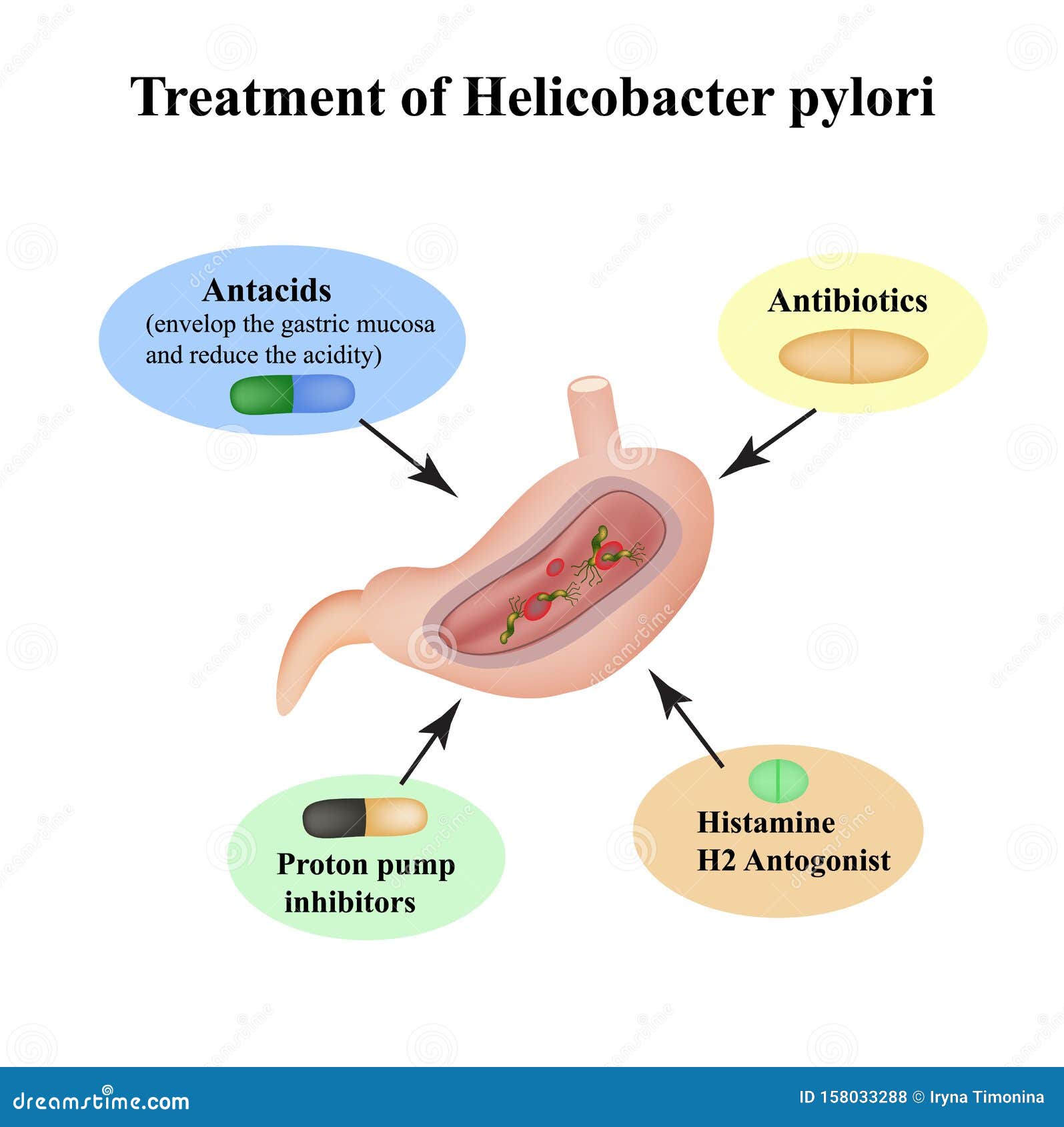

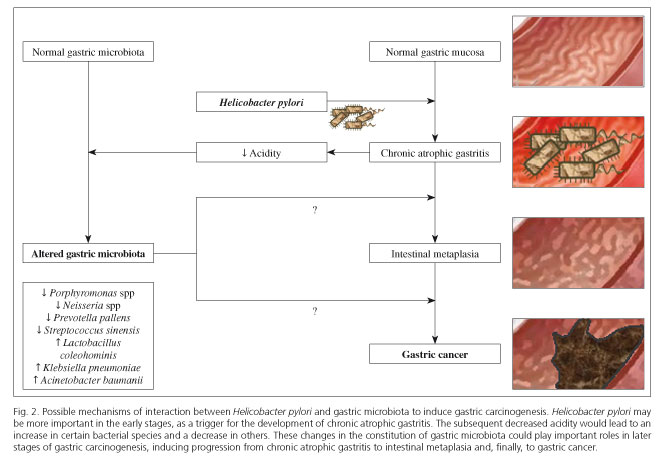 cancer.gov/about-cancer/causes-prevention/risk/infectious-agents/h-pylori-fact-sheet
cancer.gov/about-cancer/causes-prevention/risk/infectious-agents/h-pylori-fact-sheet